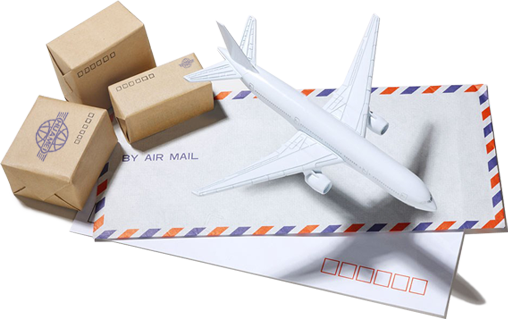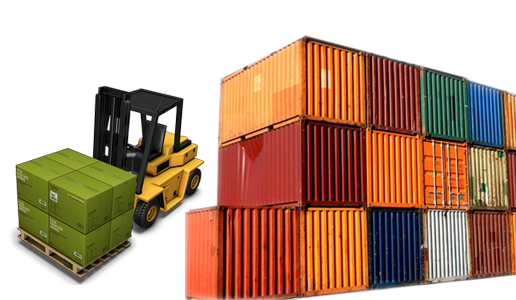Shipping Stainless Steel Products from Guangzhou, Shenzhen to the United States, Europe and Australia by sea in a FCL or LCL with delivery to door
Introduction: We provide FCL and LCL shipping services for stainless steel products from Shenzhen, Guangzhou to the United States, Europe and Australia. Professional packaging services to ensure that your goods arrive at their destination safely and quickly. Whether it's a large FCL or a small number of LCL, we can customize the best solution for you to make your export business more efficient and convenient.
In today's growing global trade, stainless steel products are favored by various markets because of their superior corrosion resistance and aesthetics. If you are looking for a reliable and fast solution for the export of stainless steel products, we provide FCL and LCL shipping lines to the United States, Europe and Australia from Shenzhen and Guangzhou, and achieve door-to-door service by direct ferry by fast ship. With rich logistics experience and professional team, we are committed to escorting your international trade and ensuring that your goods are delivered safely and on time.
Stainless Steel Products Export customs clearance documents and processes:
The customs clearance process for the export of stainless steel products by sea involves many links and documents, and the following are the customs clearance documents and processes required in general:
Customs clearance documents for the export of stainless steel products:
Commercial Invoice: details the name, quantity, unit price, total price, specifications and models of the goods.
Packing List: List details of each carton of goods including quantity, weight, dimension, etc.
Sales contract: A trade agreement signed by both parties, clearly defining the obligations and responsibilities of the buyer and seller.
Bill of Lading: A bill of lading for sea transport is proof of ownership of goods, and it comes in two main types: the master bill of lading.
Certificate of Origin: Certifying the origin of goods is typically issued by relevant institutions such as chambers of commerce, and some countries have specific requirements for the origin of certain products.
Export License: Some countries require an export license for specific stainless steel products, which must be applied for in advance from the relevant authorities.
Inspection and quarantine certificate: A document issued by inspection and quarantine authorities certifying that goods meet the health and safety standards of the exporting country.
Insurance policy: Cargo transportation insurance policy, certifying that the goods have been insured to ensure their safety during transit.
Customs Clearance Process:
Goods Preparation: Once the packaging, label, and inspection finished, the goods are ready to departure.
Submit export declaration: Submit export declaration to customs including commercial invoice, packing list, bill of lading, certificate of origin, etc.
Customs Inspection: Customs will inspect on the goods and verify the quantity, model, value, etc.
Pay tariffs and fees: Pay relevant export tariffs and fees according to customs regulations.
Customs Release: The release notice will be issued after approval, and the goods will be allowed to export.
Loading: Loading goods and getting B/L.
Documents: B/L, commercial invoice, packing list, and other documents will be sent to the destination port for import customs clearance.
Customs clearance at the destination port: Once the goods arrived, the consignee or other agents will submit the import customs clearance documents to customs at the destination port, then the import customs clearance finished.
Stainless steel products shipping export precautions:
Prepare in advance: Customs documents are required to prepared in advance in order to ensure the information are accurate and avoid any delays.
Understand the requirements of the destination: different countries may have different requirements and restrictions on the import of stainless steel products, it's necessary to understand and prepare the relevant documents in advance.
Professional services: Consider to use professional customs clearance services ensuring smooth customs clearance.
By following correct customs clearance documents and processes, it's available to export stainless steel products smoothly and avoid any delays and additional fees due to documents or wrong processes.
Price and Timeliness for Stainless steel products exported to the U.S.A, Europe, Australia via sea:
There are plenty of factors impact on the price and timeliness for stainless steel products exported to the U.S.A, Europe, Australia. Generally, based on the market situation and your specific demands and budget, we can offer you a tailor-made ocean freight solution and detailed quotation. Typically, it will take 3-6 weeks when stainless steel products exported to the U.S.A, Europe or Australia, or may vary depending on other factors. If you have any questions or need a quotation, please contact our logistics team for goods details, we will offer you a tailor-made logistics solution. Here're some factors that affect price and delivery time.
Price for stainless steel products exported to the U.S.A, Europe, Australia:
We offer transparent and competitive pricing strategies to ensure that each customer's budget is reasonably allocated. Specifically, our pricing includes the following aspects:
FCL and LCL Fee: There are two options of FCL and LCL according to the goods weight and volume.
Door to Door services: Including all necessary loading, unloading, and transportation costs from the shipping origin to the final destination.
Timeliness for stainless steel products shipping export to the U.S.A, Europe, Australia:
Timeliness is one of our key service priorities, ensuring that your stainless steel products reach their destination in the shortest possible time:
Fast boat transportation: The average shipping time from China to the west coast of the United States is about 15-25 days, Europe averages 25-35 days, and Australia averages 30-40 days.
Pre-scheduling: Estimate the shipment time in advance to ensure timely loading of goods.
Quick customs clearance: Dual-clearance services guarantee fast customs clearance at the destination port, avoiding delays.
Packaging Requirements for Stainless Steel Products Shipping Export:
Packaging requirements for stainless steel products in marine export are crucial because proper packaging not only protects the goods from damage during transportation but also ensures compliance with customs and import country standards. Here are the packaging requirements for exporting stainless steel products by sea:
Packaging Materials Selection:
Water-proof materials: Use waterproof and moisture-resistant packaging materials, such as plastic film and moisture-proof paper, to prevent stainless steel products from getting damp and rusting during sea transportation.
Secure materials: Use reinforcement materials such as wooden crates, pallets, and steel bands to enhance the stability and crush resistance of the packaging.
Packaging Methods:
Complete packaging: For larger stainless steel products, wooden crates or steel frames should be used for packaging, ensuring that each item is securely fixed within the frame to prevent movement and impact.
Packaging with binding: For smaller stainless steel components such as rebar and wire, they should be bundled with steel bands or iron wire, ensuring they are securely fastened to prevent scattering.
Labels:
Clear label: The exterior of the packaging should clearly indicate the weight, dimensions, quantity, and information of the sender and recipient to ensure that the goods can be correctly identified and handled during transportation.
DG signs: If stainless steel products are hazardous or require special handling, they should be marked with the corresponding hazard symbols and handling instructions on the packaging.
Packaging Inspection:
Internal inspection: After packaging is completed, an internal inspection should be conducted to ensure that no tools, materials, or other debris are left behind, to prevent damage during transportation.
External inspection: Check if the outer packaging is intact, free from damage or looseness, ensuring its completeness before transportation.
Subject to international standards:
Adhere to international standards: ensure that packaging complies with international maritime shipping standards (such as ISO standards) and the import requirements of the destination country to avoid customs clearance delays or returns due to packaging issues.
Special Treatment Requirements:
Rust prevention: For stainless steel products that are prone to rust, rust-proof treatment should be carried out before packaging, such as spraying rust-proof oil or wrapping with rust-proof paper.
Isolation handling: Different types of stainless steel products should be isolated to prevent contact that could cause damage or contamination.
Adhering to these packaging requirements can effectively reduce risks for stainless steel products during sea export, ensuring that goods arrive safely and on time at their destination while also enhancing customer satisfaction.
Insurance Purchasing for Stainless Steel Products Shipping Export:
Stainless steel products, being high-value items, involve various risks during ocean freight export, such as loss, damage, and delays. To protect your interests, it is crucial to purchase appropriate cargo transportation insurance. Here are some key steps and considerations for buying insurance for stainless steel product ocean freight exports:
Insurance Type:
Basic Insurance: Typically, it only covers losses caused by major incidents such as the sinking of the ship or a fire.
All risks coverage: In addition to basic coverage, it also includes losses caused by accidents (such as collisions, storms) and natural disasters during transportation.
Specific Risks: For specific types of risks such as war risk and strike risk.
Purchasing Steps:
Choose insurance company: Choose an insurance company with a good reputation and rich experience in marine insurance.
Provide cargo information: provide a detailed description of stainless steel products, including product model, value, quantity, packaging form, etc.
Determine the amount of insurance: usually the value of the goods plus the transportation costs and expected profits.
Sign the insurance contract: confirm the insurance terms and exemptions, and sign the insurance contract.
Pay the premium: pay the corresponding premium according to the requirements of the insurance company.
Precautions:
Valuation of goods: Ensure that the value of the goods is accurate, too high or too low valuation may lead to difficulties in settling claims.
Insurance terms: Read the insurance contract carefully to understand the coverage and exclusion clauses of the insurance.
Transportation details: ensure that the transportation details (such as routes, loading and unloading methods, etc.) meet the insurance requirements.
Record-keeping: Keep all documents and records related to goods, insurance, and transportation in order to make claims when needed.
Claim Process:
Report damage: After the goods are damaged or lost, immediately notify the insurance company and provide a preliminary loss report.
Inspection and evaluation: The insurance company may send someone to inspect the site or require relevant evidence.
Submit claim documents: provide documents including insurance policies, bills of lading, invoices, packing lists, loss reports and other documents.
Claim review: The insurance company reviews the claim request and confirms whether it meets the compensation conditions.
Compensation: After the review is passed, the insurance company will pay the compensation.
Taking out proper marine insurance not only protects your cargo, but is also an important part of your compliance operations. Consult an experienced insurance advisor or contact the insurance company directly to ensure the safe transportation of stainless steel products.
Precautions for sea export of stainless steel products:
When stainless steel products are exported by sea, there are many aspects that need to be paid attention to to ensure that the entire export process is smooth and efficient, and to reduce potential risks and losses. Here are some key considerations:
Understand regulations and policies:
Destination country requirements: Different countries may have specific regulations and standards for the import of stainless steel products, including quality standards, testing and quarantine requirements, etc., which need to be understood in advance.
Export restrictions: Some countries may impose export restrictions or bans on specific types of stainless steel products, so be sure to check the relevant policies.
Prepare documents accurately:
Relevant customs clearance documents: ensure that the commercial invoice, packing list, bill of lading, certificate of origin, export license and other documents are complete and accurate.
Allow time: Allow enough time when preparing documents to avoid delays due to clerical errors or missing documents.
Choose the right mode of transportation
Container vs FCL: Choose the right mode of transport according to the volume and type of cargo. FCL shipping is suitable for bulk shipments, while LCL is suitable for small shipments.
Transportation company selection: Choose an experienced and reputable freight forwarding company to ensure a safe and smooth transportation process.
Pay attention to packaging and identification
Professional packaging: Stainless steel products should use suitable waterproof, moisture-proof, and rust-proof packaging materials, and ensure that the goods are not easy to move during transportation.
Clear marking: All packages should be clearly marked, including consignee and consignee information, cargo name and center of gravity identification, to ensure that the goods can be handled correctly.
Conduct quality inspection:
Inspection report: Conduct quality inspection on the exported stainless steel products, obtain relevant inspection reports, and ensure that the products meet the standards of the destination country.
Video recording: If necessary, the packaging process can be videotaped to prevent disputes.
Arrange time reasonably
Reserve transportation time: Reasonable planning of transportation and customs clearance time to avoid affecting operations due to time constraints.
Holiday Notes: Considering factors such as holidays and port congestion, allow extra time to deal with unforeseen delays.
Insurance:
Cargo transportation insurance: insure the goods in case of loss during transportation and ensure the safety of the goods.
Keep communicating:
Communication with the buyer: Maintain good communication with the buyer throughout the export process, timely update on the shipping status and customs clearance issues.
Communicate with freight forwarders: keep in close contact with freight forwarders and solve problems that may be encountered during transportation in a timely manner.
Through the above precautions, we can effectively reduce the risks that may be encountered in the process of shipping and exporting stainless steel products, and ensure that the goods arrive at the destination smoothly and in time.
Stainless steel products FCL LCL shipping export choose us, that is, choose an efficient and convenient export method. Whether it's FCL or LCL, we offer flexible shipping solutions tailored to your needs and ensure that every step of the way is perfect. Let's work together to send your stainless steel products to all over the world. Contact us to start your international trade journey and enjoy a safe and fast shipping experience, making every export easy and worry-free.











